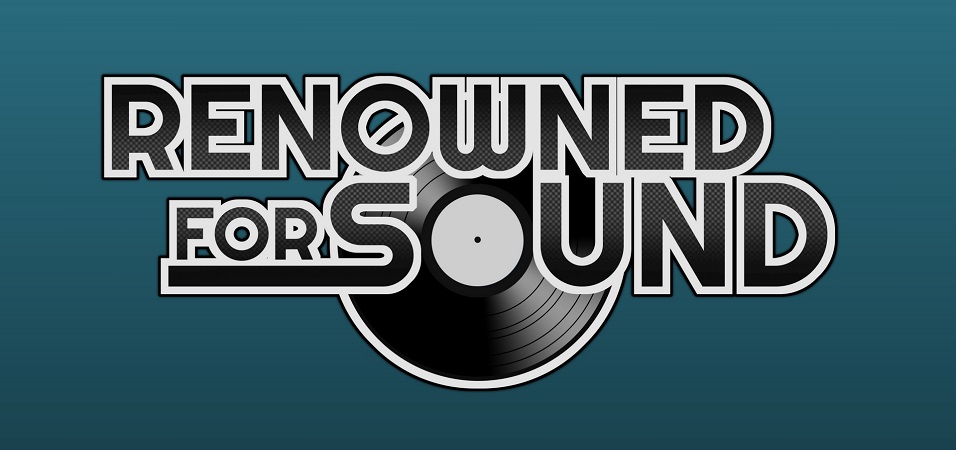Interview: Chairlift
6 min read
Since the release of their breakout 2012 album Something, Chairlift have had a very eventful few years. Vocalist Caroline Polachek and multi-instrumentalist Patrick Wimberly have toured around the world, collaborated with Beyoncé on her self-titled fifth album, Polachek released her own solo record as Ramona Lisa, and this year the band released their new album Moth, which has been received as a huge evolution of their sound.
Melding together the psychedelia of MGMT, and the inventive pop choruses of Max Martin, Chairlift artfully split the difference between the ever more indistinguishable indie and pop spheres. Moth sees the band pushing their sound even more directly into pop music, with the catchy creativity of Ch-Ching and the emotive warmth of Crying in Public finding new avenues for their sound.
We caught up with Polachek and Wimberley as they continue to tour Moth:
Chris Bohlsen: Hey there – where in the world does our interview find you both?
Caroline Polachek: At the Canadian border crossing, waiting to have our tour bus inspected so we can play in Vancover tonight!
 CB: You recently released your brand new studio album, Moth. How have your fans reacted to the release?
CB: You recently released your brand new studio album, Moth. How have your fans reacted to the release?
Patrick Wimberly: Our fans are amazing. It’s been so great to get back out on the road to see them reacting to the new music. Lots of dancing, which we highly recommend.
CB: Did you both do anything special to celebrate the release of the record?
CP: Since we were on a little north-east tour the day the record was to be released, we had a release party in Manhattan a week prior, where we played the vinyl and I sang a few of the songs live over the instrumentals. We fogged the whole place out, and had these drinks called Moth To The Flaming Doctor Pepper, which was served on fire but ended up making lots of flaming puddles all over the bar.
CB: You’ve been touring since you released Moth. How has it been treating you and whats been the best show to date for the tour?
PW: We’ve had so many great shows already it’s hard to pick a favorite. They’ve all been pretty special. One of my favorites was in Paris a couple weeks ago. We played a club called Badaboum. The crowd brought an amazing energy. A really good crowd can always make a night memorable to us.
[youtube id=”VQ3h0ZA3FQ0″ width=”620″ height=”360″]
CB: How would you say your live show has grown over the years? What developments in your shows have you focused on or have naturally changed over time?
CP: We change the ensemble with every album to reflect the recording process. Our first album was essentially written in the rehearsal studio as we played our first couple years of shows, so it was a quite straightforward three-piece. But then the second record (which we made in London with Dan Carey) had lots of intricate and atheletic instrumental work on the record because of all the multitracking we could do in th studio, so that required a 5-piece, with really skilled musicians. The goal was really to recreat the performances on the record.
This time around with Moth, Patrick and produced the album ourselves in our studio, and the arrangements are looser, more open, more groove based. So we’re really trying to bring that sense of openness and play to the live show. We’re out now with two musicians who both are actually on the album, a guitarist and sax player, who are both masters of texture and re-interpret a lot of the synths from the record. Patrick’s back on drums for the first time since our first album, and I’m barely playing synth at all (even though there are lots on the album) – I want to be fully immersed in singing this time around. The songs demand it.
CB: When you compose/write, do you have a specific style in mind beforehand, or does it emerge naturally?
PW: When we write together we usually start with a beat. We’ll come into our studio and pick a tempo that somehow matches our mood and start layering some rhythms. That gives us a foundation to write on top of. I’ll usually be on my MPC and Caroline will be on her synth with a mic setup. It starts off very improvisational and as a mood develops, we’ll figure out what the song is about. Some songs happened in different ways but about half of this record was written like that.
CB: Are your emotional songs like Crying In Public just conceptual, or based on experiences?
CP: Based in experience, of course. The uncanny thing is that a lot of the lyrics on this record started with what I call “applesauce”, just singing melodies without the words, and building out the song structure that way. But then when I’d go in to write lyrics, I’d often find that there were lyrics already embedded in the sounds that got to the heart of something I was dealing with at the time, and articulated it better than I could have if I sat around and thought about it. The subconscious is very powerful. The lyrics for Crying In Public and No Such Thing As Illusion both came that way… Sort of by accident.
[youtube id=”nWSFlqBOgl8″ width=”620″ height=”360″]
CB: What’s the story behind Moth’s evocative cover art? The colours are very striking. Who put the cover together and how does the artwork represent the music?
PW: We worked with a great artist named Rebecca Bird, who we had worked with on the Amanaemonesia video. We both love her paintings and commissioned her to paint us a New York skyline and a Moth. These two things represent some themes we saw woven throughout the music… Our life in New York and the moth represents vulnerability and ambition…
CB: How do you spend your time when you’re not focused on music and touring? Any hobbies that fans may not be aware of?
CP: I love cooking. The first thing I do when I get back from tour is go grocery shopping and cook a huge vegetarian meal at home. My husband and I collect field recordings – we have a bank of them going that we both add to and share. I also collect bells from all over the world, and am a half decent haircutter (even though clearly I don’t practice on myself). But the main thing for me is music. I’m never not thinking about something I want to be working on.
PW: I like to paint. Usually with water colours and ink. But I haven’t been doing enough it lately.
CB: Moth seems to be brimming with different influences, from pop, to hip-hop, to blues. What kind of music do you listen to? Is Moth indicative of the music the two of you listen to yourselves?
PW: Sure. A lot of my favourite music of the last five years has been pop and R&B stuff. Some of my favourite productions have come from those genres. But, of course, we both listen to a pretty eclectic spectrum of music, from jazz to Bollywood. I think those things make it in there, too.
CB: How do you feel about your older work in hindsight? Are you as proud of it now as you were when you made it?
CP: I don’t listen to albums once they’re done except as reference for live arrangements, but yes, I’m proud of them. We learn and change so much from album to album, so it’s not fair to judge any of them by current standards. All you can do is your best at any given moment, and we’ve always done our best. I don’t have any regrets.
CB: Do you tend to compare your own work to your influences?
PW: No not really. Once we get far enough into the production of a song, usually it’ll be living in a world of it’s own. Either that or we’ve gone far into a world of our own! It becomes more about completing its world, than comparing it to anything outside of it.
Chairlift’s new album Moth is available now.



